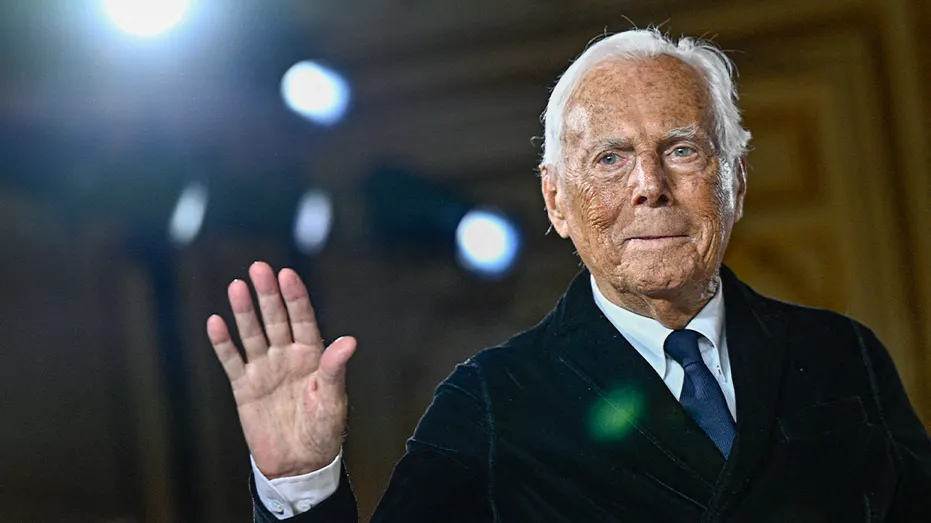Giorgio Armani, the Italian fashion designer whose name became a global symbol of style and sophistication, has died at the age of 91.
Armani was often described as the face of Italian elegance. He reshaped the way men and women dressed, giving classic suits a softer, modern look that appealed to generations. From a small luxury label launched in 1975 with his late partner Sergio Galeotti, Armani grew his business into an empire. Today it spans fashion, beauty, fragrance, music, sport, and even luxury hotels, with annual revenues topping £2 billion.
His company said in a statement that Armani “worked until his final days, dedicating himself to the company, the collections and the many ongoing future projects.” It described him as “indefatigable to the end,” guided by “relentless curiosity and a deep attention to the present and to people.”
Donatella Versace posted a tribute on Instagram, writing, “The world lost a giant today, he made history and will be remembered forever.” British designer Paul Smith called Armani a “dear friend and fellow designer,” praising his independence and “staying power in remaining as an unlisted, independent company.”
Hollywood also remembered him. Russell Crowe, who wore Armani for many red-carpet events, said the designer was part of “so many significant moments” in his life. Julia Roberts shared a picture of them together, writing, “A true friend. A legend.”
Italian Prime Minister Giorgia Meloni honored Armani as “an icon, a tireless worker, a symbol of the best of Italy,” thanking him for bringing “lustre to Italian fashion and inspiring the entire world.”
Armani’s influence went far beyond the runway. He helped shape modern red-carpet fashion, dressing stars like Zendaya, Cate Blanchett, Julia Roberts, and Lady Gaga. He designed costumes for films such as American Gigolo and The Wolf of Wall Street.
In 2006, after the death of model Ana Carolina Reston from anorexia nervosa, he became the first designer to ban underweight models from his shows. His decision was seen as a turning point in how fashion addressed body image.
Vogue’s Laura Ingham called him a “true gentleman” and “titan of the industry,” adding that “if you don’t know anything about fashion, you’ll still know Giorgio Armani.”
Armani was born in 1934 and originally studied medicine before moving into fashion in the 1960s. His style became known for clean lines, refined silhouettes, and immaculate tailoring. Despite controversy at times—including criticism for remarks in 2015 about gay men and a 2014 financial settlement with Italian tax authorities—he remained one of the most respected names in global fashion.
Away from the catwalks, Armani was deeply involved in sport. He supported Inter Milan football club and owned the Olimpia Milano basketball team. He also partnered with Ferrari’s Formula 1 team. Driver Charles Leclerc said it was “a great honour to have had the chance to meet and work with such an amazing person.”
Even in his 90s, Armani continued to design. His March 2025 show addressed global politics, with the designer saying he wanted to “imagine new harmony.” Though his health raised concerns earlier this year when he missed Milan fashion week, he still directed his couture show in Paris remotely from Milan in July.
Armani received both the French Legion of Honour and the Italian Order of Merit for Labour during his career. His influence stretched far beyond fashion, shaping culture and red-carpet style for decades.
As Paul Smith put it, his “strength and creativity” inspired countless designers. And as many of those he dressed for film premieres and award shows made clear, Giorgio Armani was not only a fashion legend but also a trusted friend.
His legacy—timeless, elegant, and unmistakably Italian—will live on.
